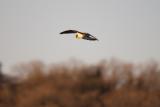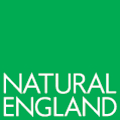
Elaine Potter
What is your role in the Predatory Bird Monitoring Scheme?
I manage the practical side of the PBMS which includes fielding telephone and email queries about sending birds and eggs, receiving and sending out boxes, carrying out post-mortems, logging samples, sending out the post mortem reports, sampling the eggs, answering queries about reports and storing samples.
On arrival at CEH Lancaster the birds are assigned a unique number, placed in a labelled plastic bag and stored in a walk in freezer ready to be thawed out at a later date for post mortem. The post-mortem involves taking a number of different measurements and samples of tissues from the bird. Data is entered onto a database and samples produced during post mortem are stored in trays and frozen in readiness for future analysis and studies.
Another of my tasks is taking care of the Dermestes maculatus beetles - a species of carrion beetle. D. maculatus are used to remove the flesh from the bone samples of the birds since clean bone samples are required for analysis. We have a video showing the beetles cleaning a sperrowhawk carcass.
How did you get involved in the PBMS?
I am a local girl raised on a farm in North Cumbria. I was working for a food production company carrying out food microbiology testing before I joined the Centre for Ecology & Hydrology (CEH) in 1999 as a Microbiologist. Over the years I developed my skills to perform other analyses such as phospholipid fatty acid (PLFA) analysis. This allowed me to demonstrate an attention to detail and ability to follow detailed multi-step analytical processes.
I became involved in the Predatory Bird Monitoring Scheme 6 years ago when the work was transferred from Monkswood in Cambridgeshire to Lancaster during a major reorganisation of the CEH structure.
With my farming background, I am not squeamish but had never carried out a post-mortem. I was keen to take on a new challenge and was in a position to volunteer to undertake training specific to birds of prey in order to take over this work. I now carry out the majority of the 300 + post-mortems per year.

Kestrel image (© Alan Lawlor)
What is your favourite bird of prey and why?
The Common kestrel (Falco tinnunculusis) has been a favourite of mine since childhood. I admire its expertise at hovering for long periods of time before swooping down - always a fascinating sight and one I still love to see.






